What do you think when you hear the word raptor?
Those of us from generation Jurassic Park can’t help but think of the terrifying dinosaurs nicknamed “raptors,” horribly Hollywoodified versions of Velociraptor that were as it turns out, way too naked. Yes, Velociraptor had feathers, and arguably, it and the other dromaeosaurs could even be called birds, but given what we know right now, that’s just a matter of taste, and I doubt it suits most people’s. Feathers run much deeper in the dinosaur tree than anyone had imagined, but oh my, look at the time, I’ve already spent far too long on a subject I didn’t intend to touch at all.
The modern, living birds called raptors are generally (but not always) predators with hooked bills for tearing flesh and strong, piercing talons for grabbing and holding prey. Hawks, eagles, vultures, kites, ospreys, falcons, and owls are all among the birds sometimes considered raptors, or birds of prey, raptor coming from the Latin verb rapere, to grab, to seize, to carry away, which entered English many times over the centuries, also giving us rapid, rapt, rape, rapacious, rapture, ravenous, ravish, and raven, as in ravening wolves, not the bird. Raven as a bird’s name is of ancient Germanic origin, quite unrelated to the other word. And there I go again.
Immature Red-tailed Hawk (Buteo jamaicensis) in Missouri. This bird shows the typical hooked bill and long, curved talons possessed by many raptors. © David J. Ringer
Early taxonomists grouped diurnal birds of prey and owls because of certain similarities, and in the early 1800s, these groupings were called variously Raptatores, Raptores, and Rapaces. Owls have long since been removed by most scientists, their similarities attributed to convergence.
The order Falconiformes, containing all diurnal birds of prey, enjoyed broad recognition through much of the 20th century, and though true ornithological consensus was never reached, the idea that all diurnal raptors are related, and therefore that raptor, excluding the owls, is a taxonomically meaningful term, became fixed in many people’s minds. (Sibley and Ahlquist have an interesting review of the historical classifications.)
Sibley and Ahlquist shattered that fantasy in 1990, asserting that “New World” vultures were very likely stork relatives and belonged in Ciconiiformes, not Falconiformes. Most people still haven’t recovered.
But we’re way past that stork-o-vulture thing now, folks, and new generations of genetic studies are leading to hypotheses that are perhaps even more counterintuitive, and more wonderful.
First, “New World” vultures and condors are not stork relatives. (I keep putting New World in scare quotes because fossil evidence indicates that they once ranged widely in the Old World too.) Their relationships are still not entirely clear, but it’s likely that they are sister to a major clade of hawks, eagles, and other diurnal raptors (more on that in a minute). This relationship is distant and tenuous enough that the American Ornithologists’ Union South American Checklist Committee prefers to place them to their own order, Cathartiformes, a position also adopted by the IOC but not by the AOU’s North American Checklist Committee.
Turkey Vulture (Cathartes aura) sunning in Texas © David J. Ringer
The Cathartiformes is likely sister to a clade of diurnal raptors now called Accipitriformes. And this one’s a biggie. In the last few years, a series of genetic studies has suggested that the falcons and their relatives are not closely related to the other diurnal raptors! The AOU NACC proposal and AOU SACC proposal to split the orders contain summaries of the evidence.
The new order Accipitriformes contains two oddball members, the Secretarybird and the Osprey, and a group of more than 200 hawks, buzzards, eagles, kites, harriers, goshawks, and the “Old World” vultures. It’s a fantastic group of birds, from familiar, rodent-loving buteos to songbird-sized insect-eaters, enormous bone-smashers, tool-users, and even a flexitarian or two. John Boyd has a great rundown on what we know about systematics of the Accipitriformes.
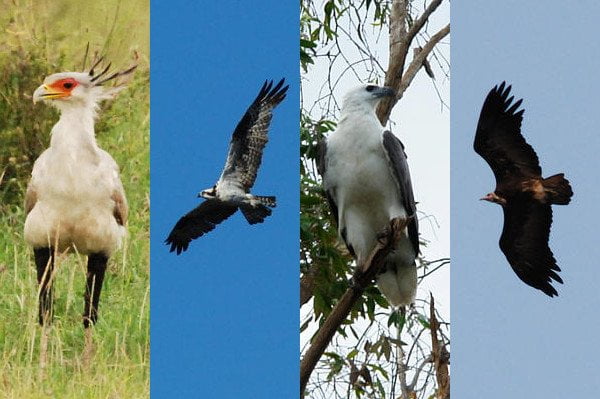
Secretarybird (Sagittarius serpentarius), Osprey (Pandion haliaetus), White-bellied Sea Eagle (Haliaeetus leucogaster), Hooded Vulture (Necrosyrtes monachus) © David J. Ringer
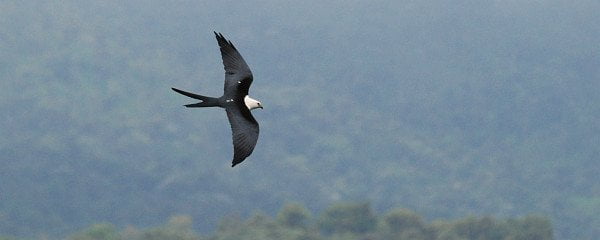
Swallow-tailed Kite (Elanoides forficatus) in Ecuador © David J. Ringer
The Cathartiformes and Accipitriformes together are sister to a group of non-passerine landbirds, including owls, mousebirds, trogons, hornbills, kingfishers, barbets, and woodpeckers. Notice the owls are there, but falcons are still nowhere to be seen.
Sister to this entire assemblage is a group some call the Passerimorphae. It contains sereimas, falcons and caracaras, parrots, and passerines. Falcons and parrots — isn’t it magnificent? If you have your doubts, just take one look at this stunning Kea high in New Zealand’s mountains.
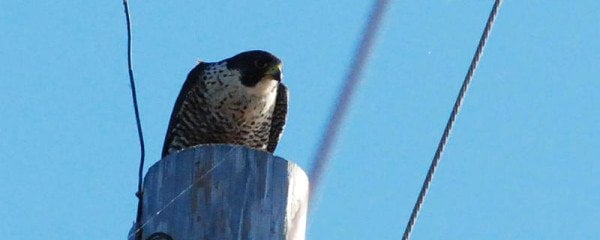
Peregrine Falcon (Falco peregrinus) in Louisiana © David J. Ringer
Much work remains to be done, but for now, it appears that our old conception of “raptors” is gone. The word can and will still refer to birds with certain adaptations for hunting and carnivory, but we can no longer lump them all together as close relatives. Pressed for analogy by a birding friend, I said, hawks are to falcons as cats are to bats. I’m sure there are flaws in the analogy (that’s why we have a comments section!), but the point, I think, is made.
But the distance between two such similar-seeming groups is only half of the story. Consider this: That robin eyeing you from the garden is a raptor without talons. Beware. Beware.









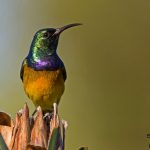


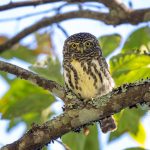


I very much enjoyed this. Thank you for sharing. Good luck in all your adventures. Keep everyone posted on your progress.
I must be a masochist, because I absolutely love cladistics. Thanks for this post, David!
The link to that Kia pic really helped illustrate the falcon-parrot relationship.
Great post, and I am never turning my back on a robin again…
American Kestrels are such cute, colorful, deadly little parrots. But what about Greater Roadrunner; certainly a carnivore but without talons and a hooked beak?
The pigeon-hole that the word raptor conjures, is indeed, not taxonomically relevant. Nice post.
Great post — my bunch of bloodthirsty middle-school birders are going to love this. Thanks!
Falcons and Parrots. But of course …
Thanks for this great post and the links!!
I was about to write an article on raptors of our region in India. Your write up on the raptors evolution has given me more facts on the evolution. I agree and subscribe to your thoughts.
Thanks for all the educative information.
facts about golden eagle